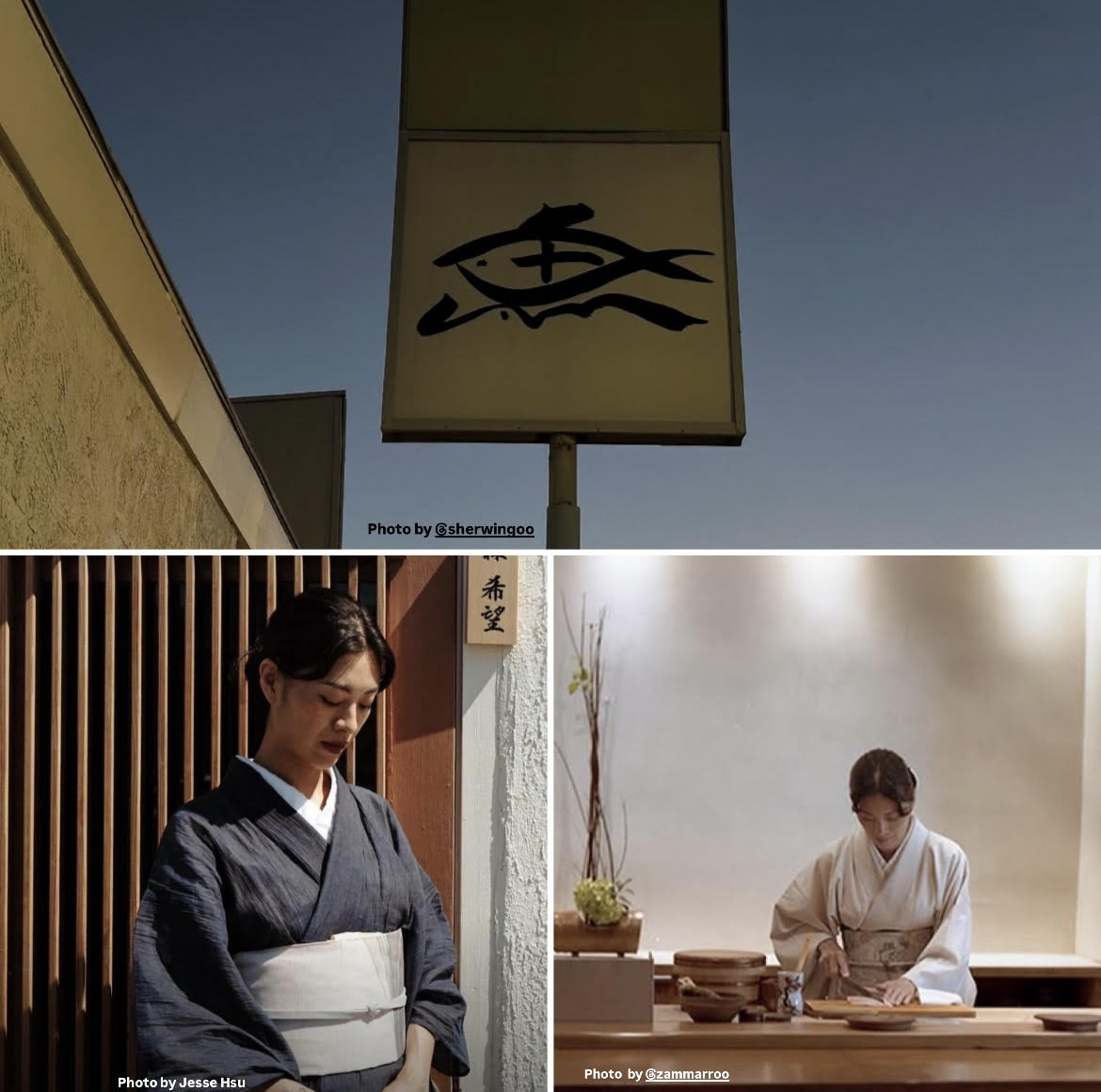
When we think of an omakase, we think of septuagenarian men discreetly slicing fish behind a counter.
Since last year, sushi chef Nozomi Mori has unintentionally disrupted the omakase scene in Los Angeles. Her namesake restaurant, Mori Nozomi, sits inconspicuously in one of the busiest stretches of West LA, just two blocks away from the dreaded I-405. While I waited for the restaurant to open, none of the passersby or people who were stuck in bumper-to-bumper traffic did a double take at the nondescript building, where the most prominent feature is the drawing of a fish on a high pole.
You wouldn’t think that herein lies one of the most important omakases that LA has seen in the last few years. Earlier in 2025, Mori Nozomi earned a spot in the Michelin Guide.
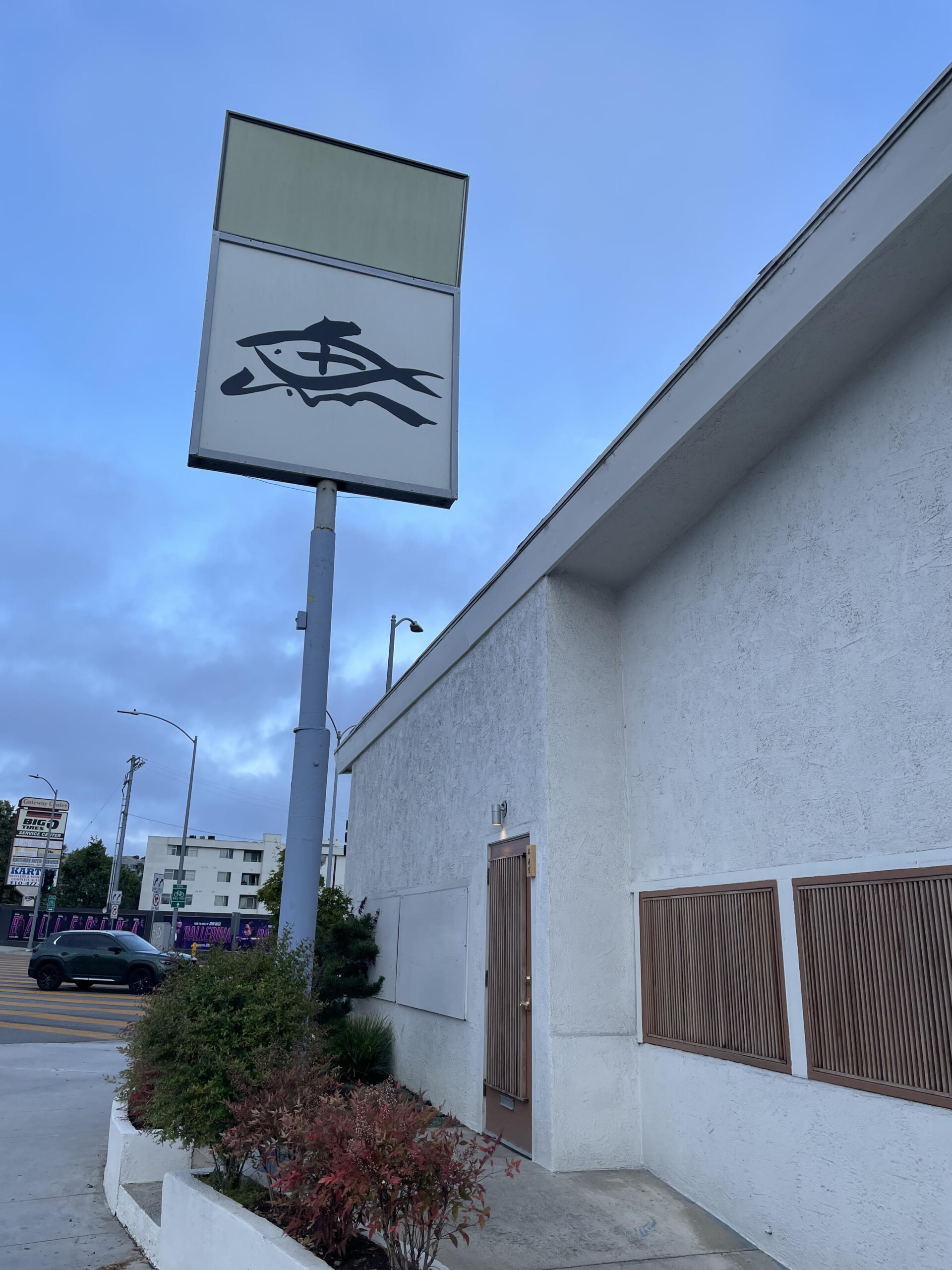
The former one Michelin-starred restaurant, Mori Sushi (not related to Mori Nozomi), had graced this corner building for the past 25 years with one of the most exclusive omakases in the city. Since November 2020, the founder Morihiro can be found at his eponymous eatery in Atwater Village, where an omakase runs for $400 a head.
Born and raised in the industrial city of Amagasaki, on the outskirts of Osaka, Nozomi Mori worked at Gucci in Osaka. In 2017, at age 29, after traveling to 30 countries, Nozomi decided to make Los Angeles her permanent home. Unaware of the city’s unique Japanese food scene, Nozomi told me the reason she chose LA was the great weather.
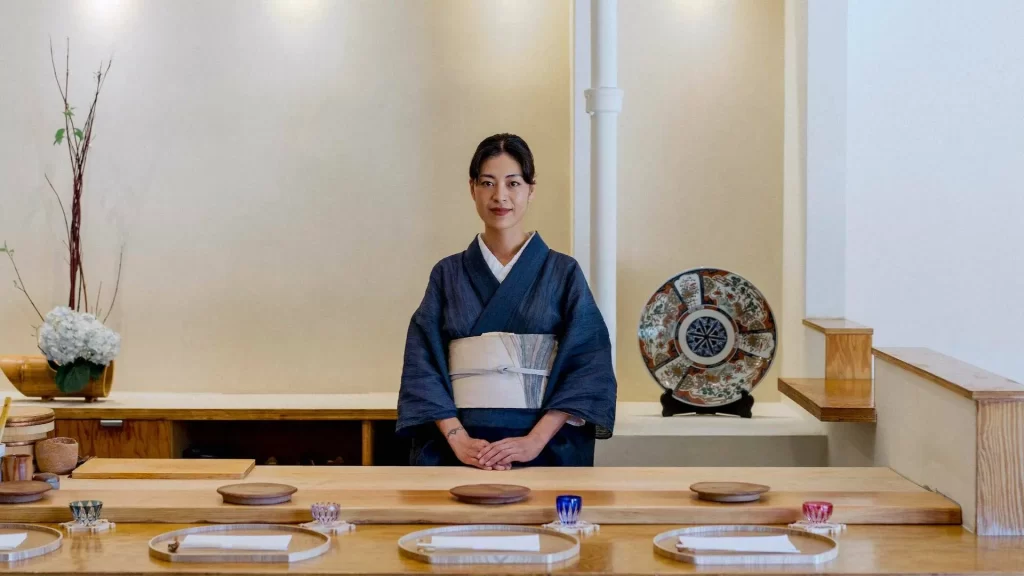
In 2023, the World Bank released a report, in which Japan ranked the lowest among developing countries regarding gender equality. The sushi industry in Japan has always been dominated by men, so the possibility for Nozomi to become a sushi chef never crossed her mind. After I went to Mori Nozomi, I found that there are indeed a few female sushi chefs in Japan who are breaking the stereotypes, but only by an infinitesimal amount — like Chef Yuki Chizui or Chef Mei Kougo.
When you watch Nozomi’s mind-blowing dexterity in cutting fish, you would think that she acquired those skills in Japan, but no! It was all here, in the City of Angels.
Upon moving to Los Angeles, Nozomi took a tea ceremony course, also known as chado. This Japanese ritual harkens back to the 15th century, and its four foundational principles are harmony, respect, purity, and tranquility.
Nozomi also worked as a model in Los Angeles, but she was yearning to dive deeper into Japanese culture.

What she thought was going to be an interview for a waitress position at a Japanese neighborhood restaurant, landed her a job as a chef. Isn’t it crazy how the universe always leads us to where we’re supposed to be? After that job, Nozomi worked at Moto Azabu in Marina del Rey, where she spent four years learning how to make sushi and treat fish. The veteran sushi chefs, instead of shunning Nozomi for her gender, welcomed her with open arms. She had another gig (more about this interview below) before opening Mori Nozomi in early 2024. However, when Mori embarked on this solo adventure, she never intended to hire an all-female team — it just happened inadvertently.
Mori Nozomi is an eight-seat sushi counter. This isn’t the type of place where you can casually waltz in and ask for a table. Reservations are released a month in advance, every Sunday at 10 am through TOCK with a mandatory $200 deposit. At the end of April, Nozomi posted on her IG stories that all the reservations for May were fully booked and that new slots for June would open that same week, Sunday, May 3, at 10 am.
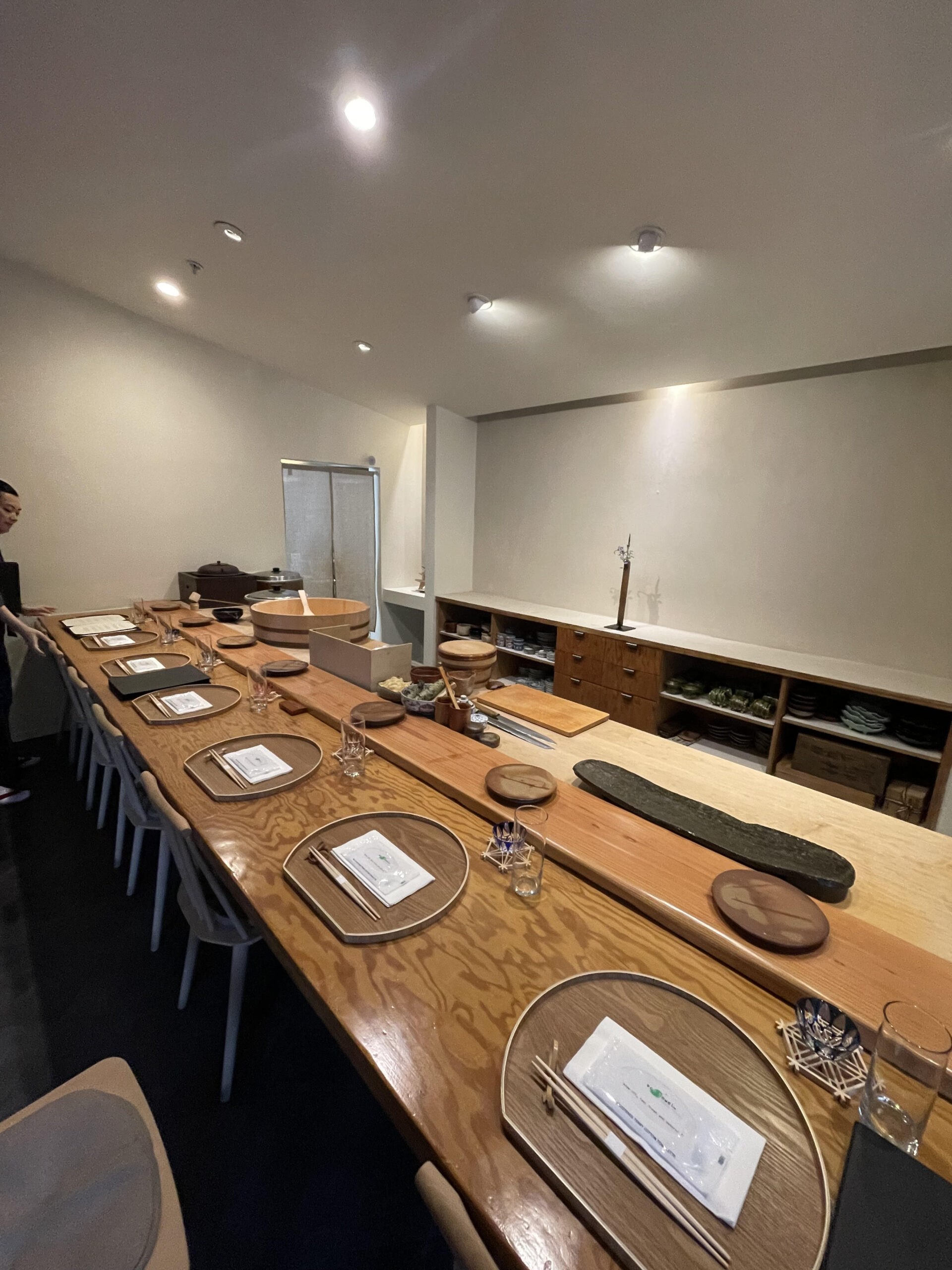
That Sunday, I set my alarm for 9:58 am and impatiently kept refreshing the page every 10 seconds. Two minutes later, there was a message alerting that all the reservations were sold out. Discouraged by this, I closed the tab and walked away from my laptop. Five minutes later, I opened the TOCK website for what I thought would be the last time when a slot magically appeared for June 3, exactly a month away from that day. Reservations are tough to get, but don’t give up!
This 26-course omakase is three hours long and operates Monday through Friday from 7PM to 10 PM. Nozomi’s omakase was so meticulously crafted that you won’t feel too full or hungry afterwards. It was perfect. At the beginning, Nozomi let us know that if we were feeling full, to please let her know so that she could make us smaller pieces – but none of us did.
The minimalist space embraces Ikebana, the art of Japanese flower arrangement, promoting harmony and balance. Watching Nozomi assemble and cut the fish was also very grounding. The whole omakase was a zen-like experience, from start to finish.

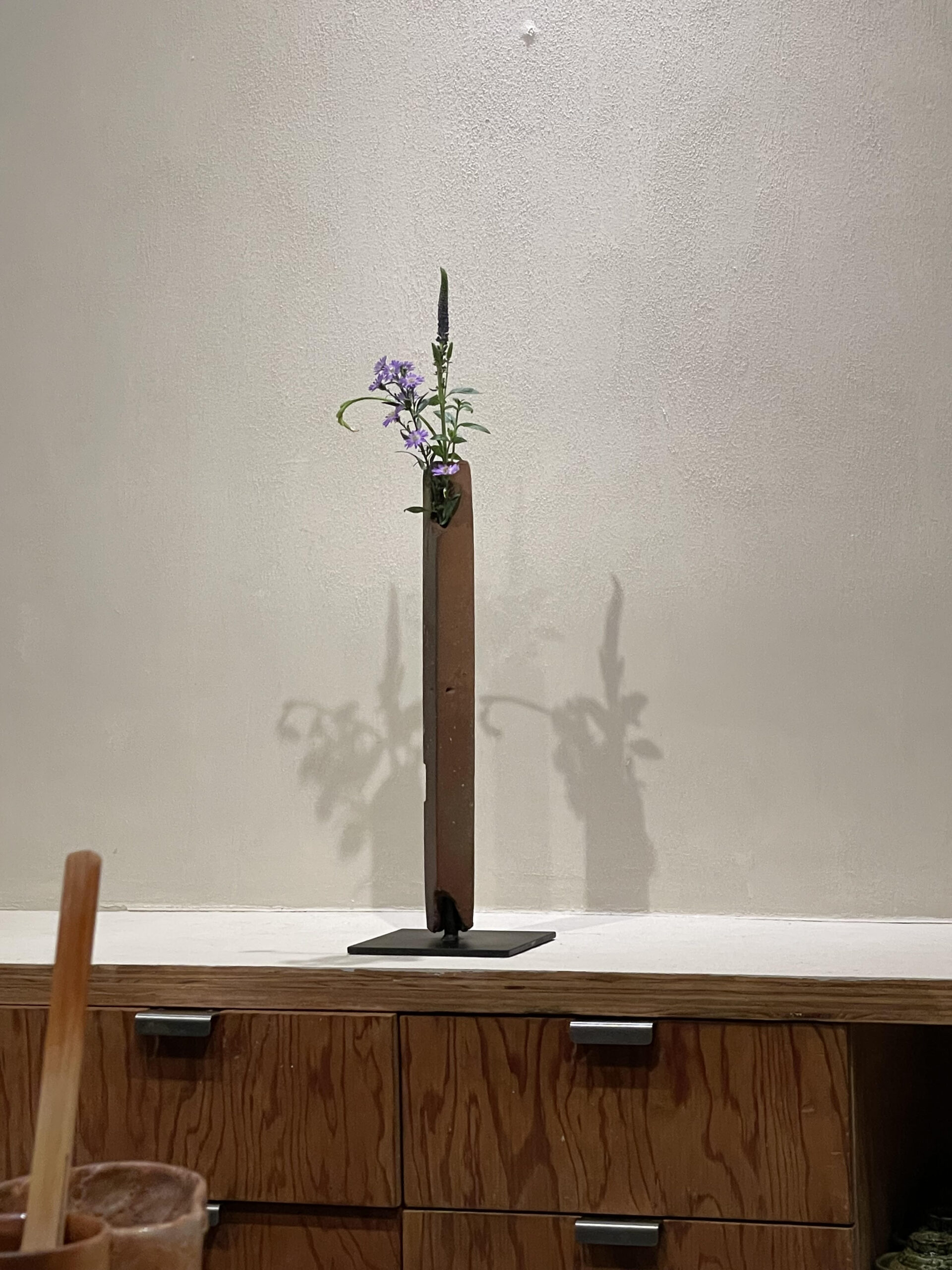
During the three-hour omakase, Nozomi blends her stunning artistry as a sushi chef and luxury hospitality background. I’ve had my fair share of omakases in LA, but never have I witnessed such craft and mastery of fish.
Up until Mori Nozomi, almost every time I wanted to indulge in a splurge-worthy experience, the customer service was always subpar, like this $350 facial or this $115 tasting menu that I was really excited to try. 😔😔
At Mori Nozomi, hospitality is at the core of the business. Upon being seated, you’ll be given a menu with your name and date. When you leave the restaurant, Nozomi and her team will bid you their farewells with a personalized, handwritten note on a tea bag expressing their gratitude for hosting you. Overall, you will feel appreciated and special from the moment you walk through the door.
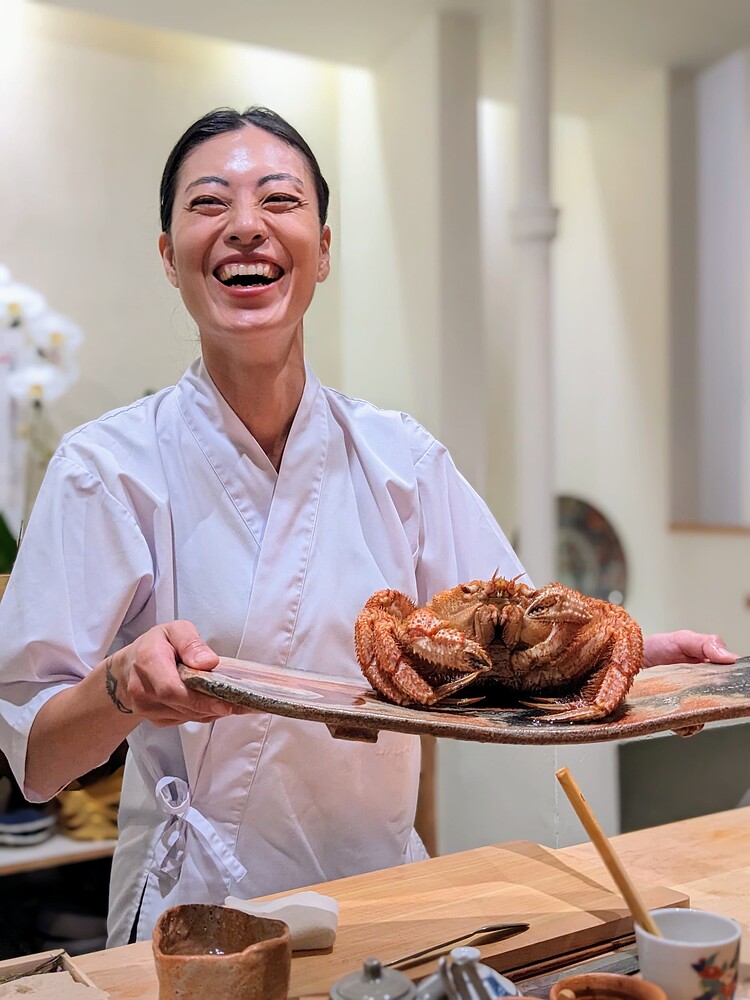
We ate, sipped broths and teas out of ceramic dishware that Nozomi herself brought from Japan. Some of the fish we’d just eaten were shown to us on an iPad, where we heard about their provenance. Although I don’t drink alcohol, it was a constant to see carefully curated drinks being served, some of which had ice imported from Japan. A woman two seats over me kept expressing her amazement out loud. “What? Oh My God!!”, which I found amusing.

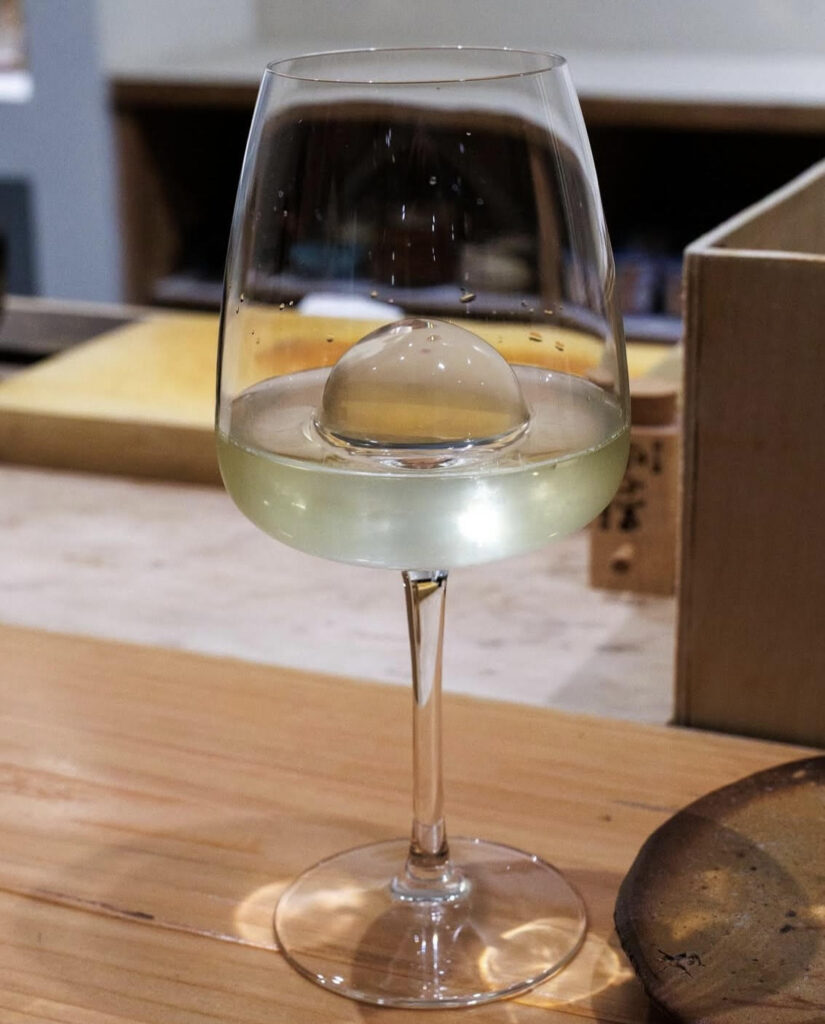
This wild bluefin tuna was so expensive that it was served alongside a certification showing the catch location in Choshi, Chiba Prefecture.

At Mori Nozomi, you’ll experience unique combinations that will get your taste buds in a tangle. Overall, you’ll have a deeper appreciation for Japan’s rich culinary heritage, known for its sophistication and harmonious blend of flavors that go far beyond sushi.
The last time I experienced a service like the one at Mori Nozomi was on Japan’s island of Hokkaido, back in 2009, where my family and I stayed in a hot spring. During every meal, we sat in a tatami room and enjoyed the distinctive Japanese hospitality, also known as omotenashi.
Except for one man, the remaining guests were female. I was seated next to a girl named Alex, who also went by herself. Like me, Alex loved exploring new places. Lately, she had been doing an omakase tour in her neighborhood of West LA.
While the other parties were talking among themselves, Alex and I watched Nozomi’s knife work in pure awe.
Every course was particularly unique, but if I had to choose one, it would be the first dessert, the umeshu sorbet with plum wine, with its bright tart notes, the right amount of sweetness, and exquisitely soft texture. It was so delicious I almost shed a tear. Nozomi rotates her fish and sorbet flavors based on the season, so it’s not guaranteed that this specific one will be available if you go.
The tamago (Japanese omelette) was one of the many standouts. In most sushi places, the tamago is served cold, over a bed of rice with a nori strip around it.
Nozomi emerged from the kitchen with the steaming tamago on a pan. It was prepped like a cake and served piping hot without rice. This is how tamago is eaten in Hyogo Prefecture, the region where Nozomi grew up. The egg was airy and had a sponge-like texture, oozing with juiciness from the hot dashi stock.
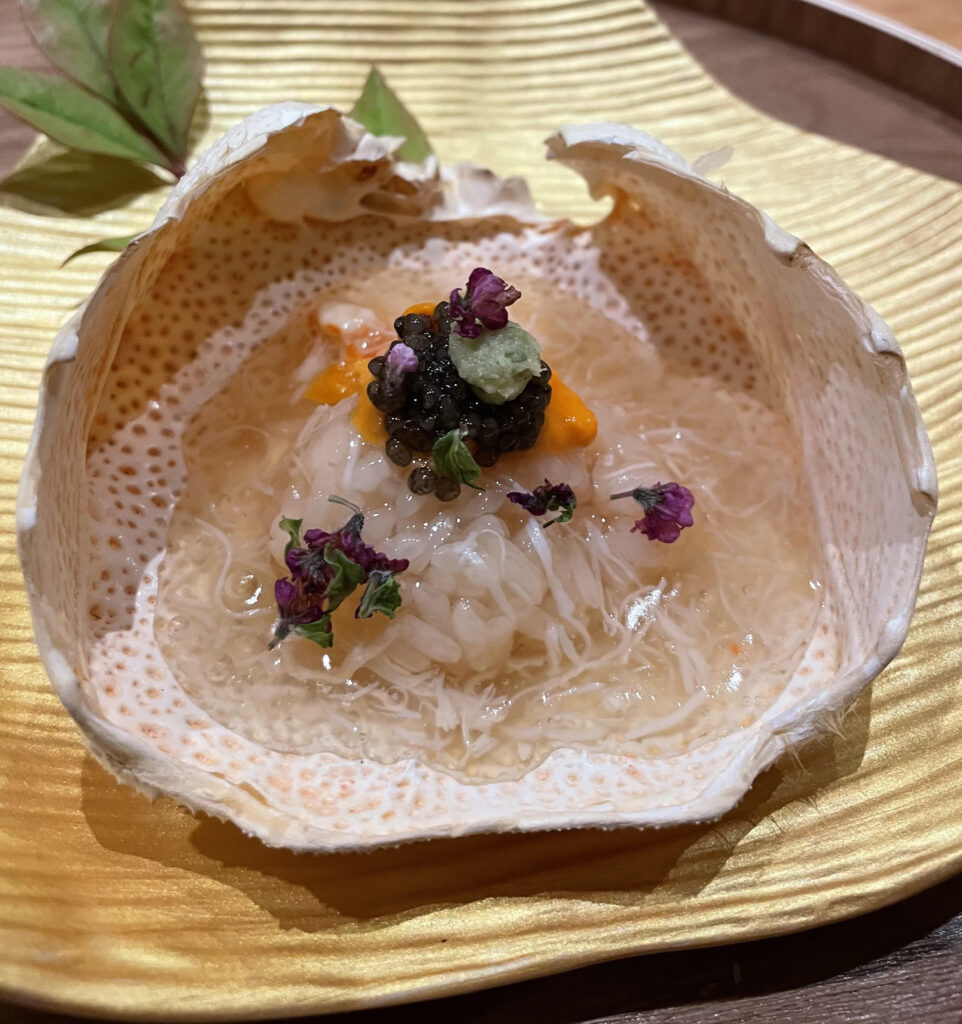
The best course presentation goes to the Kegani Ankake (pictured above), an open crab shell served with a small mound of rice and topped with uni, caviar and a pinch of wasabi – flanked by shredded crab meat. However, the real starring turn was the clear viscous sauce that Nozomi poured over it – creating an extra layer of depth to the hairy strands and enhancing the marvellous combination of flavors. It was like fireworks on the 4th of July.
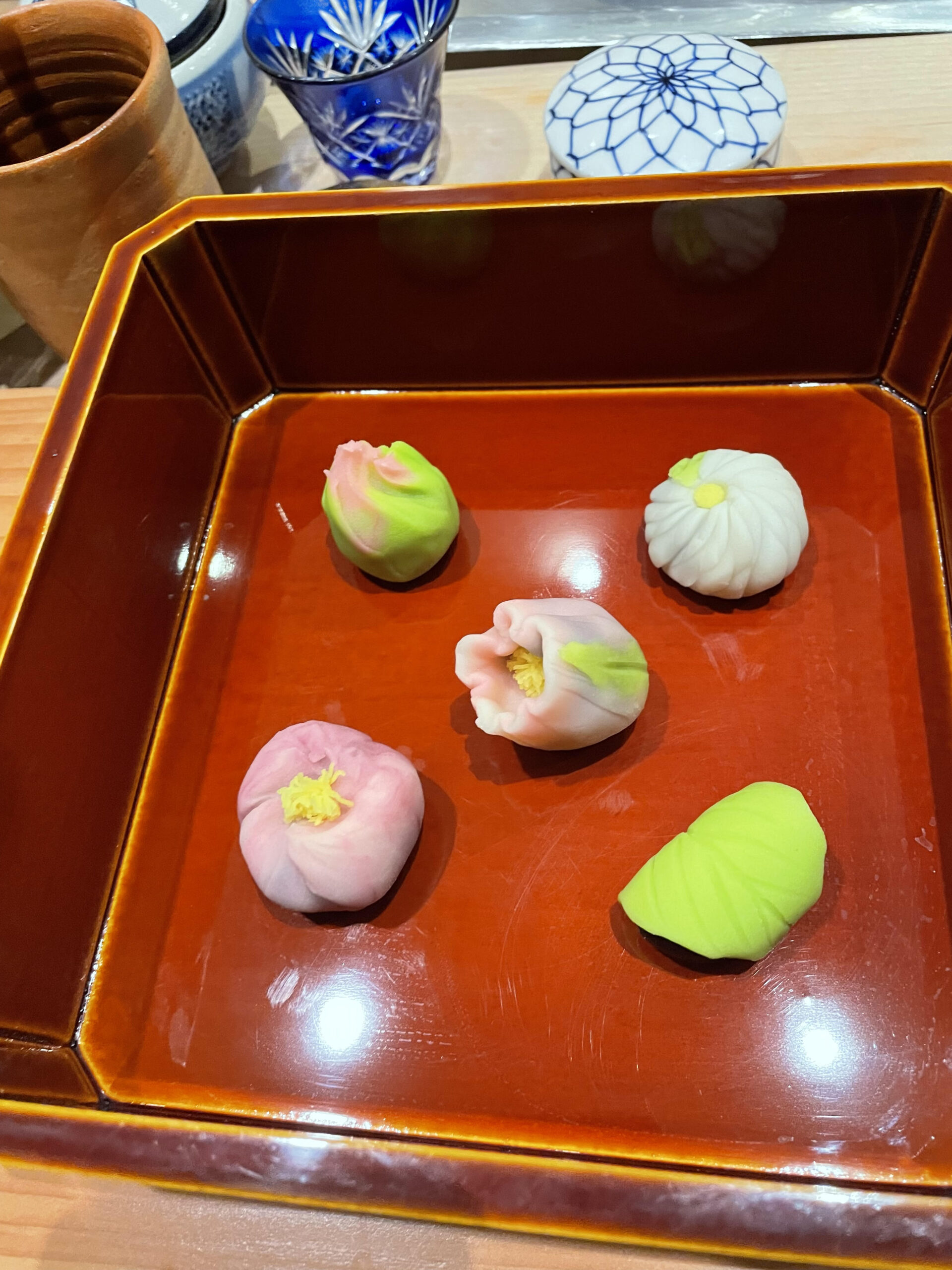
These delicate Japanese confections (wagashi) are known for stimulating the senses. Not only are they visually striking, but they are also ever-changing based on seasonal plants and flowers.
Before serving them on individual plates, they showed us the eight pieces in two different trays so we could appreciate the vibrant colors and intricate shapes handcrafted by Nozomi.
The interplay between the rich, nutty bean paste and the smooth, ever-so-slightly chewy exterior was a delightful combination.
The sweetness of the rice dough lingered on the roof of my mouth. That’s when the matcha tea pairing came into play, adding a subtle bitterness and balancing the richness of the bean paste.
Uni is an acquired taste, and the two times I’ve had it, I’ve always felt very indifferent towards it. Alex beautifully described it. “To me, good uni is like mermaid food. It’s like you’re tasting the ocean.”
I read a review of a $400 omakase in Beverly Hills, where the customer was appalled to pay that much money only to have uni from Santa Barbara. At Mori Nozomi, the uni is from Hokkaido. We all watched Chef Nozomi delicately pull out the uni from a box with a Japanese tag and dole it out over small mounds of rice.
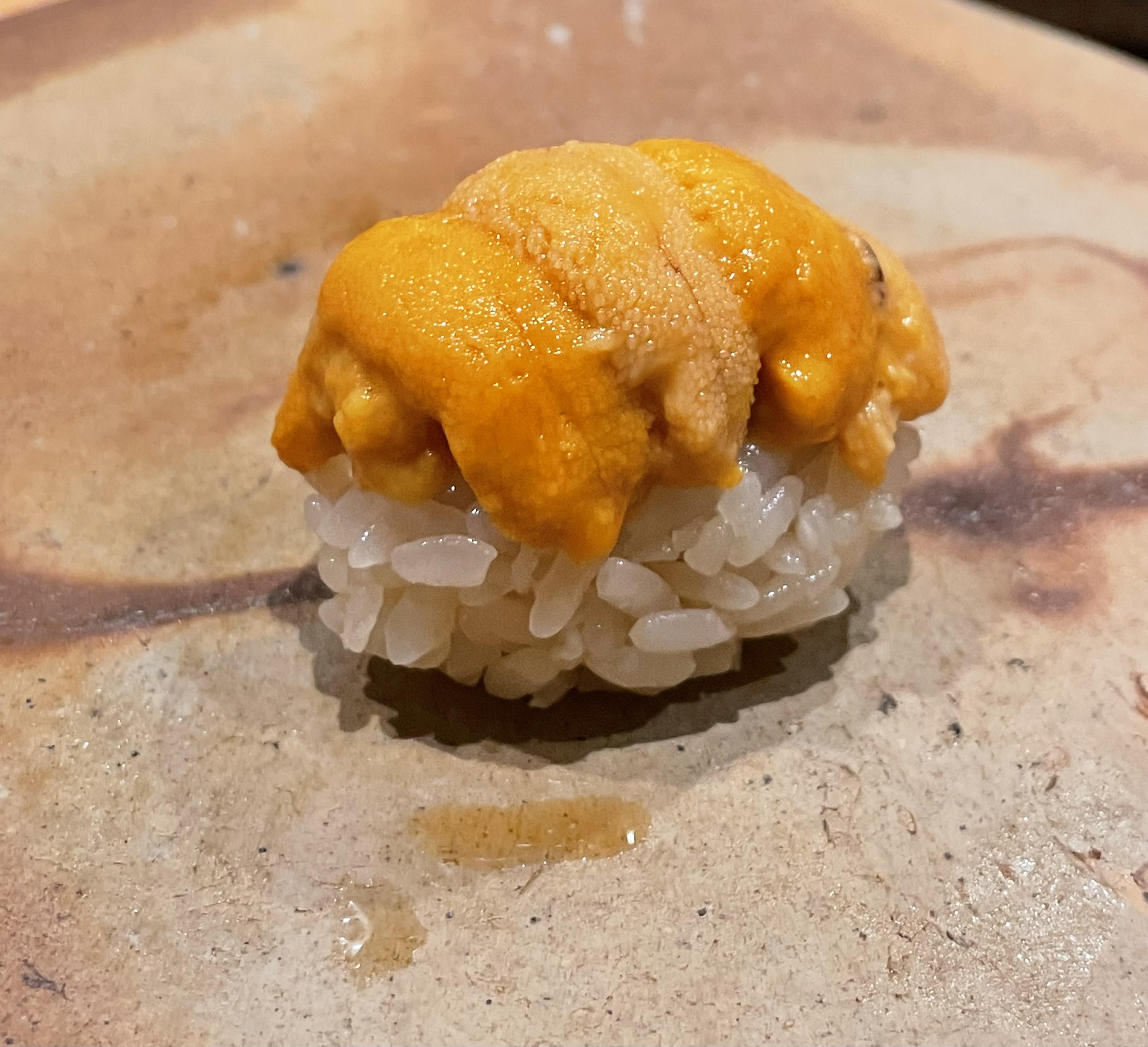
Uni from Hokkaido is considered the best in the world due to the pristine kelp forests that inhabit these waters, yielding a delicate buttery texture, unique umami taste and exceptional freshness.
Alex and I ate it at the same time and we had the same reaction. “Wow!! See? It just melts in your mouth.” It was very rich and briny, with a subtle sweetness to it — just spectacular in every way.
“What was the thing we had in the beginning? It was delicious,” said Alex. She was referring to the Chawanmushi with ginkgo nuts, a steamed egg custard, bursting with savory dashi stock that hit the mouth with a plush mouthfeel. This was a great way to get our taste buds revved up for what was about to come.
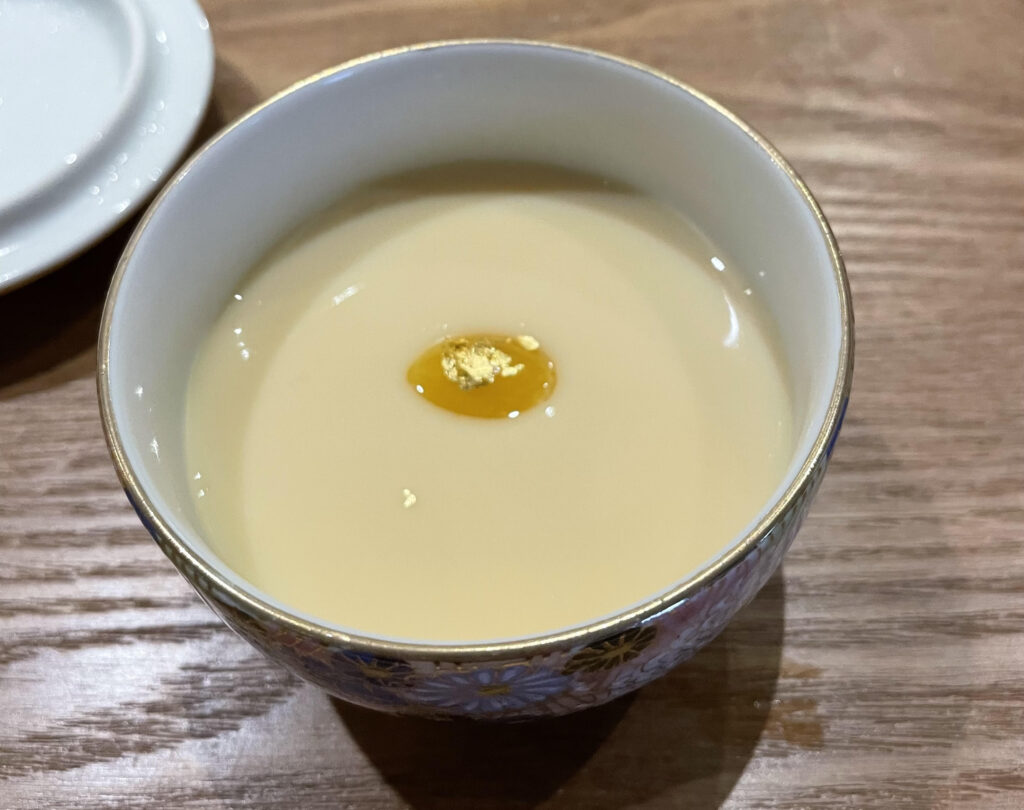
The miso soup they give you towards the end was by far the best miso soup I’ve ever had. The depth of the savory broth was unparalleled.
I could go on and on about each course. There are quite a few pieces that I didn’t photograph because I wanted to be as present as possible, but they still live on in my dreams.
We finished the meal with a citrus caffeinated tea and a ceremonial grade matcha, served in a handcrafted tea bowl, also known as chawan. We were shown on an iPad the lush farm in Hokkaido where the matcha was planted. Look at that bold, emerald green and luscious foam!

Nozomi shared with Eater LA: “I started the tea ceremony because you’re in front of the customer, showing its delicate beauty. As a sushi chef, you’re also in front of customers, and you have to make it very elegant,” Mori says. “When you’re making tea, it’s subtle. Everyone watches. Nobody talks. Everybody is focused. Now, I see this as a kind of meditation, a way to calm down, relax, and focus on what I’m doing with my hands.”
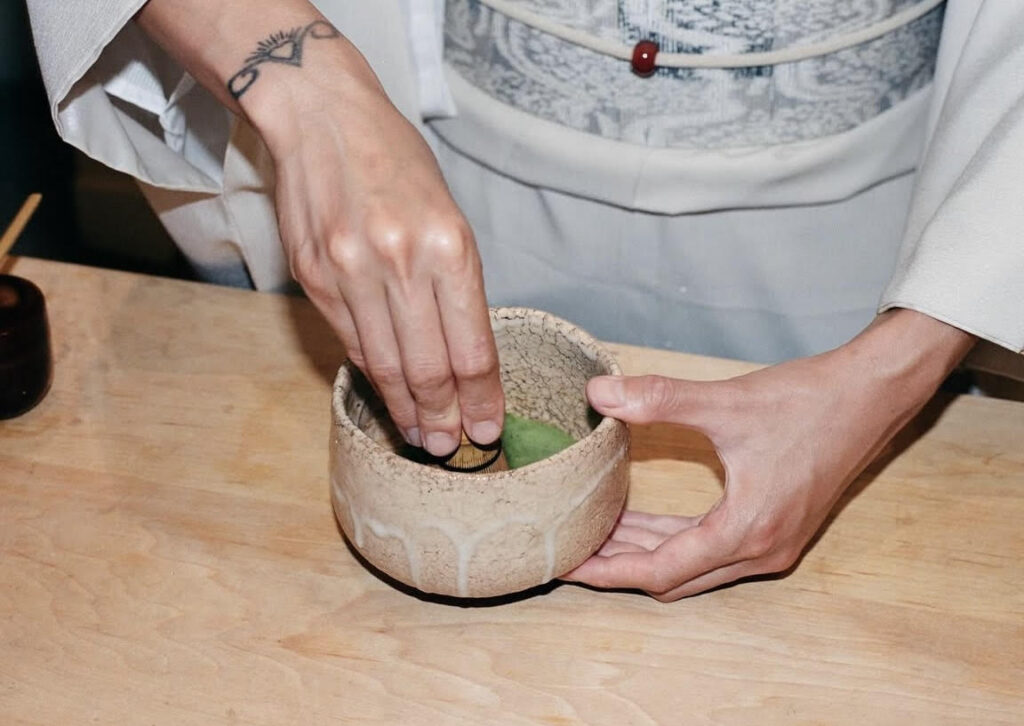
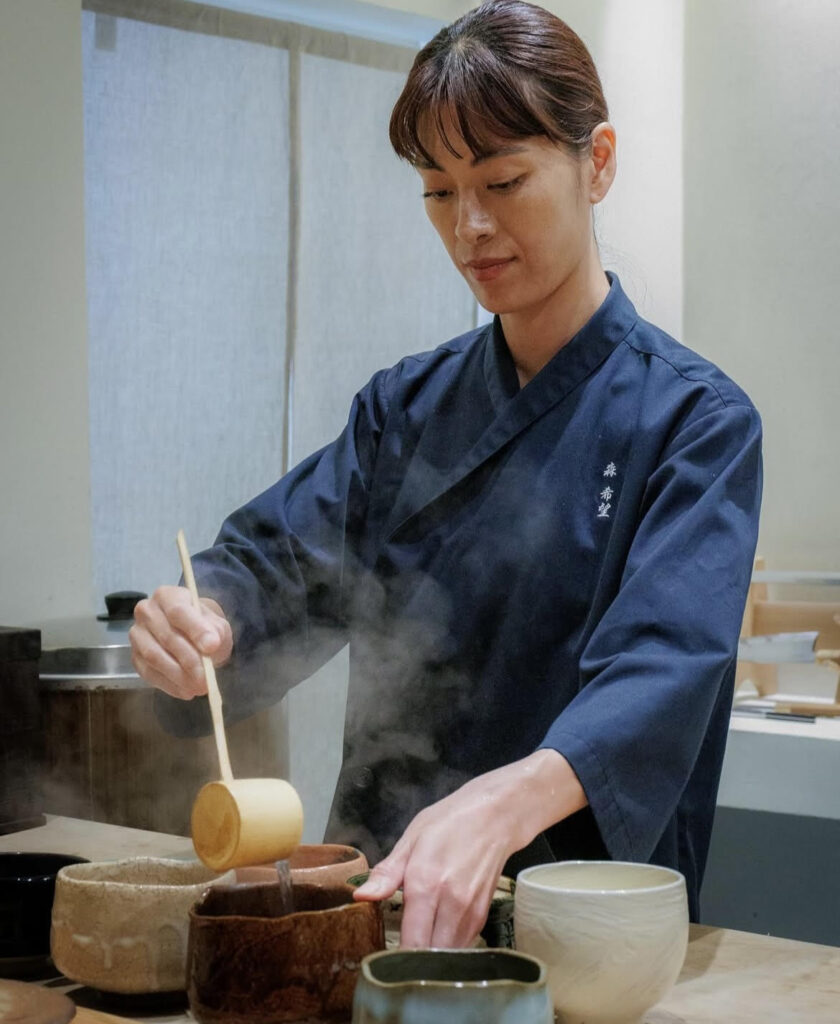
Another guest asked the same question I had. Would the caffeine affect our sleep that night? Megumi, server and Nozomi’s publicist, assured us that Japanese caffeine was subtle and very gradual, like a mountain. She said, “It’s not like coffee where you get jittery. Our caffeine is roasted, so it’s very subtle. To this day, we haven’t received any complaints about people not being able to sleep”.
As someone who is extremely sensitive to caffeine (I can’t drink coffee past 3pm), I slept like a baby that night.
I’ve already raved enough about Mozi Nozomi, and I hope you get to experience it someday. I also encourage you not to look at too many pictures of the omakase, as it’s always better to let the night unfold and be surprised.
While you’re dining at the restaurant, you’ll get an email about your $200 deposit refund, which was posted back to my card in two business days. After your meal, you pay the full omakase price of $250, plus drinks, sales tax, and an optional gratuity.
I personally found paying the $200 again an inconvenience, but Mori told me that all the deposits go through TOCK and that they don’t even see the credit card information. Also, because the omakase is expensive, the deposit is high.
The day before, Nozomi was formally dressed in a Japanese chef uniform, wearing a slicked bun, voluminous mascara and gracefully showcasing her prowess on the “stage”, as she calls it. She was cordial, but not overly personable.
When people spend their hard-earned money on such a unique fine dining experience, the stakes are high.
At one point during the omakase, when Nozomi was about to cut a tuna fish, she paused and inspected it. Then she flipped it and made the subtle tongue clicking sound we use to express annoyance or disapproval. Conversations continued. Was I the only one who caught that? Nozomi’s facial expression didn’t twitch one bit. The show went on.
The following day, I was shocked by the stark contrast. Now, Nozomi’s demeanor was very laid-back. She was wearing her hair loose, bare skin – dressed in a grey tank top, black slacks, and black Adidas. She was very gregarious and laughed a lot during our interview.
When I asked Nozomi if there was a particular night she remembered, she vividly recalled the first day of opening the restaurant, where she was so nervous she cut her finger.
Hello Nozomi! What made you want to become a sushi chef?
There aren’t female sushi chefs in Japan, so that wasn’t even a possibility. I traveled all over the world and wanted to do something that showed Japan. I took a tea class ceremony, chado. But I was like, “I want to do something more Japanese”. I walked into a sushi restaurant to interview as a saba (waitress), but they asked me if I wanted to come into the kitchen and be a chef. I was like, “fuck yeah!” (Laughs). I really enjoyed it. It was there when I knew that I wanted to open my own restaurant, but it was a step-by-step process.

The way you cut fish is very beautiful. You learned that here in LA?
Yes! At first, I started at an Americanized Japanese restaurant, so I made a lot of California rolls and dragon rolls. Then, I worked at Moto Azabu, near Venice Beach, where I met a lot of seventy-year-old sushi chefs who taught me how to cut and how to treat the fish. Then, I worked at Sushi Ginza Onodera in West Hollywood, a two-Michelin starred restaurant. It’s the most high-end sushi restaurant in LA. That’s where I learned how to organize an omakase. After that, I opened the restaurant.
Is there anything you’ve learned when you worked at these restaurants that you’ve applied to your business?
When we finish the day, we have a meeting. Maybe the operation wasn’t as good that night. We try to improve every day. Even if the customer comes again, every night is different. I always try to think that every day is a new day to learn something new and do things differently, even with the sushi!
I’ve worked with many sushi chefs who had 20-30 years of experience, but even so, their knife cuts weren’t beautiful and they simply didn’t care. I realized that long experience doesn’t automatically create great skill.
Every day, you have to make sure the fish is caught right and that it’s cut the right way. I’m always thinking about it. I’m always thinking of how to care for it.
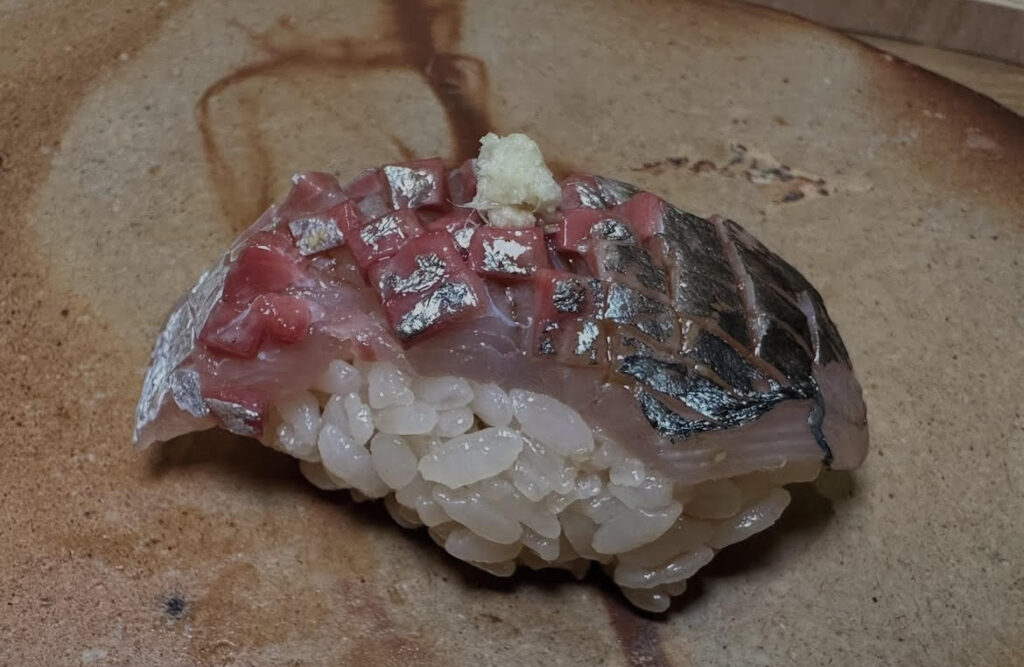
Shosa is a Japanese term for refined and beautiful movements. I also make sure to apply that as well.
You worked at Gucci. Why was it important for you to translate that experience of hospitality, refinement and luxury into your omakase?
We always say that we’re like a sushi Disneyland because we never show the back of how things are made.
If I’m paying that much money, I don’t want to see kitchen equipment. I’ve been to many sushi restaurants and I get disappointed when I see that because it’s a stage.
At Gucci, if we were going to show something to the customers, we’d bring the nicest hangers or take things out of boxes in the back. I learned that there.
In the omakase, to maintain the front-of-house aesthetic, I replaced the silver bowls that looked too much like backstage kitchen equipment with attractive ceramic bowls for customer presentation.

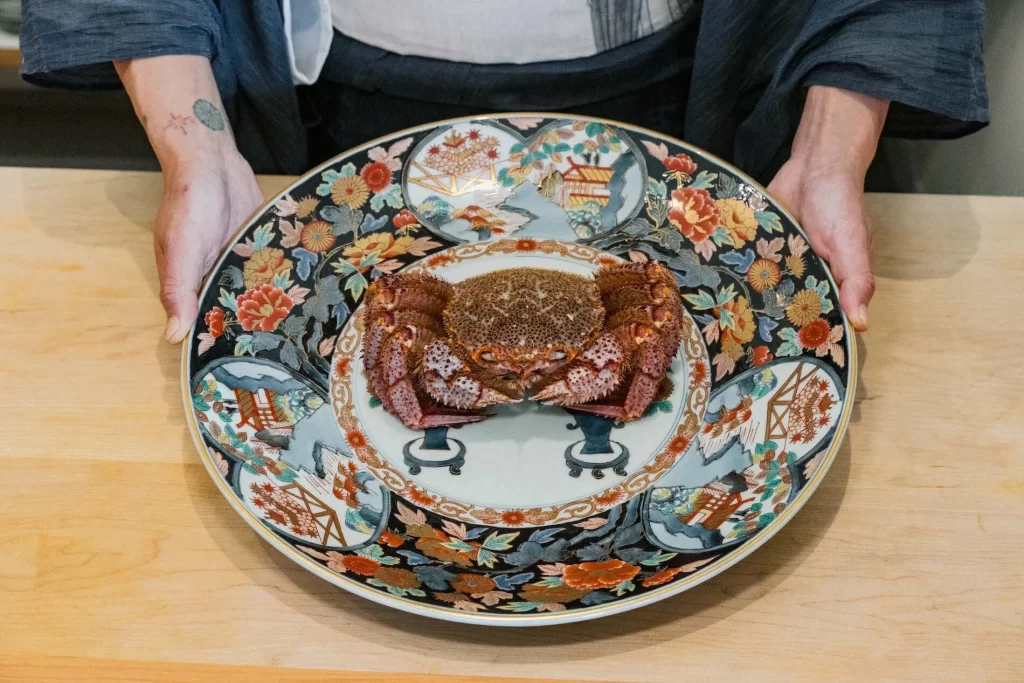
The cap for omakase meals is usually 20 courses or fewer. Your omakase was 26 courses, which was perfect because I didn’t feel too full or hungry afterward. Why?
I eat a lot!! (laughs). I’ve been to many Japanese restaurants, but sometimes the food isn’t enough, so I have to pay extra to feel full. It’s not cheap. I change the menu every three months based on the season and I want to show different variations of the fish I get. The sorbet we offer is made from scratch.
One time, a customer told me that he went to a $400 omakase in Beverly Hills and didn’t get full, so he went to a pizza place after. That’s so sad!
Has there ever been a moment when you were discriminated for your gender?
Actually, I’ve never had a bad experience in LA because here is more equal. One time, a man said to me, “Are you the sushi chef?” I thought it was in a bad way. But then he said he wanted to give me a hug. Other times, a guy may say, “I want to buy a beer for her,” because they want to talk to a girl. Even yesterday, except for that one guy, it was all women. I want to create a safe space for women. So no, I haven’t had a bad experience being a female sushi chef in LA.
In your opinion, what makes a good Japanese restaurant?
The service. They have to make you feel welcome. Americans like to talk a lot. We, Japanese, don’t talk much but our actions are very important to make the customer feel welcome. Oshibori is a towel that you use to clean your hands during your meal, and it’s a form of hospitality. We’re always thinking about little details like that and what the customer needs, not just talking.

What is your favorite fish?
Bluefin tuna is my favorite.
Los Angeles
What do you like about living in LA?
I love the weather and that it’s not humid like in Japan.
What are your favorite places in LA?
I live in Palms and I like going to Venice Beach with my dog. I also like going to the HAMMER Museum. They have a really nice restaurant inside, LULU.

An ideal day in LA would be going to the beach, hiking with my dog, going to a museum and getting a coffee. Simple. I also love going to Palm Springs because it’s just a two-hour drive from LA, but it feels like I’m on a real vacation.
What are your favorite restaurants and coffee shops in LA?
Hakata Izakata HERO in Westwood. It is a very authentic izakaya. It’s really good.

Providence – It’s a Japanese-French fusion restaurant. It has two Michelin stars.
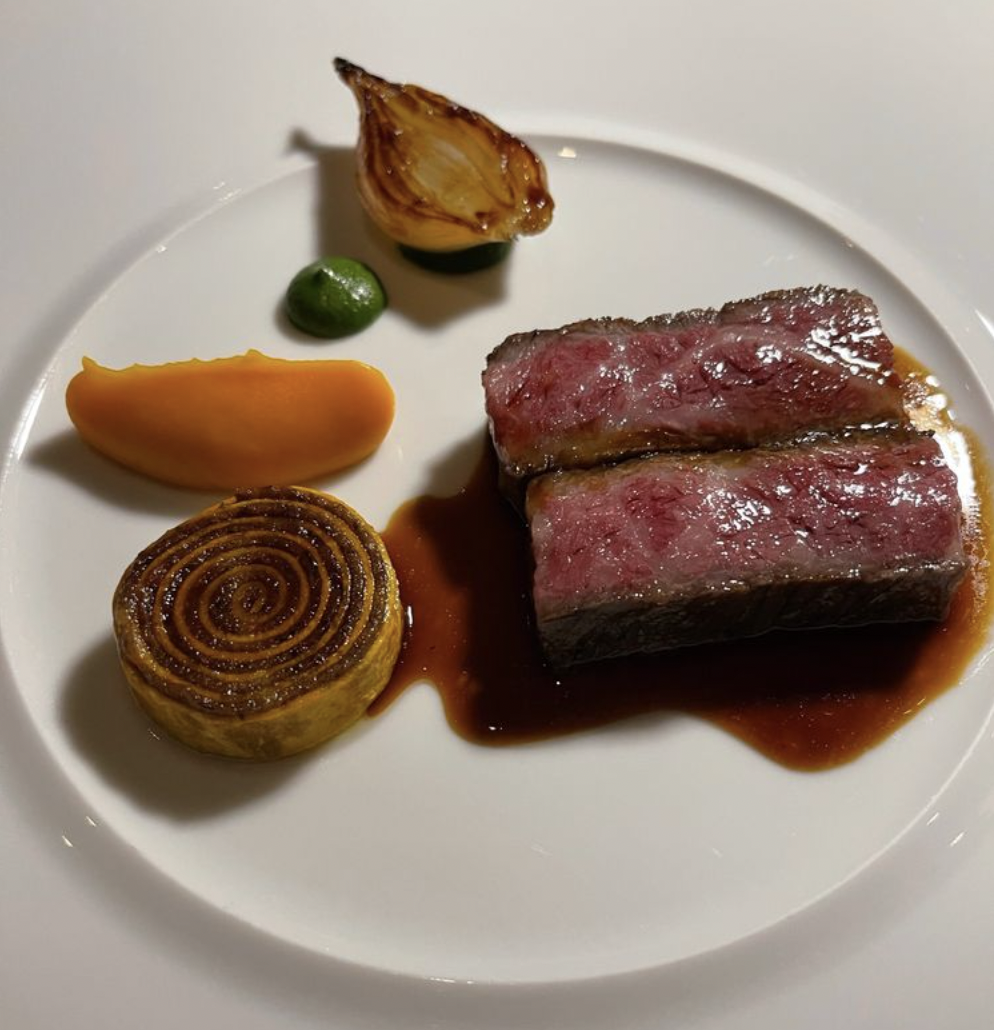
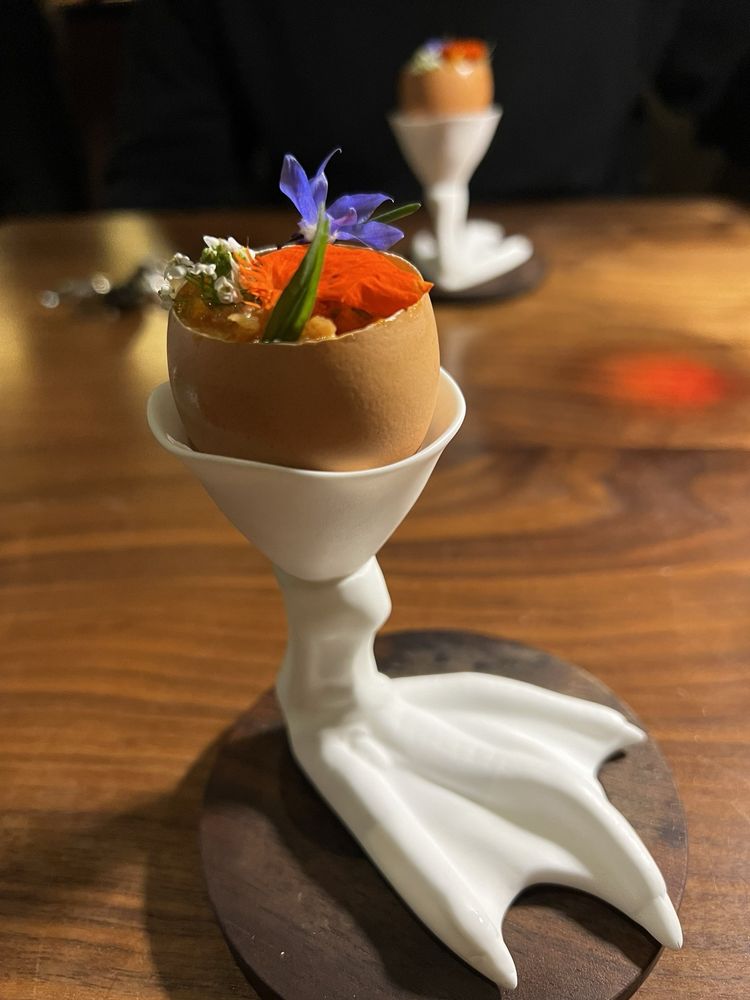
Wanderlust – I really like ice cream. (laughs). My favorite flavors are Ube and Japanese Neapolitan!
Kato – Taiwanese-American fusion, very interesting. (Kato has one Michelin star).
Pizzeria Sei – It’s Korean-owned. I really like them.
There are sooo many coffee shops, but I usually go to Federal Coffee, which is like two blocks away from here.
Yesterday, I couldn’t help but notice your mascara and lipstick!
(Laughs) I wore the ILIA Beauty mascara. The lipstick is from MAC.
From the moment guests walk into the space to the time they leave the restaurant, what do you hope they take away from the three-hour omakase?
I focused on authentic Japanese beauty because I want customers to feel like they’re stepping into a Japanese museum. Beyond the visual experience, I emphasize warm hospitality. We provide tea packets after meals so guests can enjoy the tea at home and remember their great experience with us.
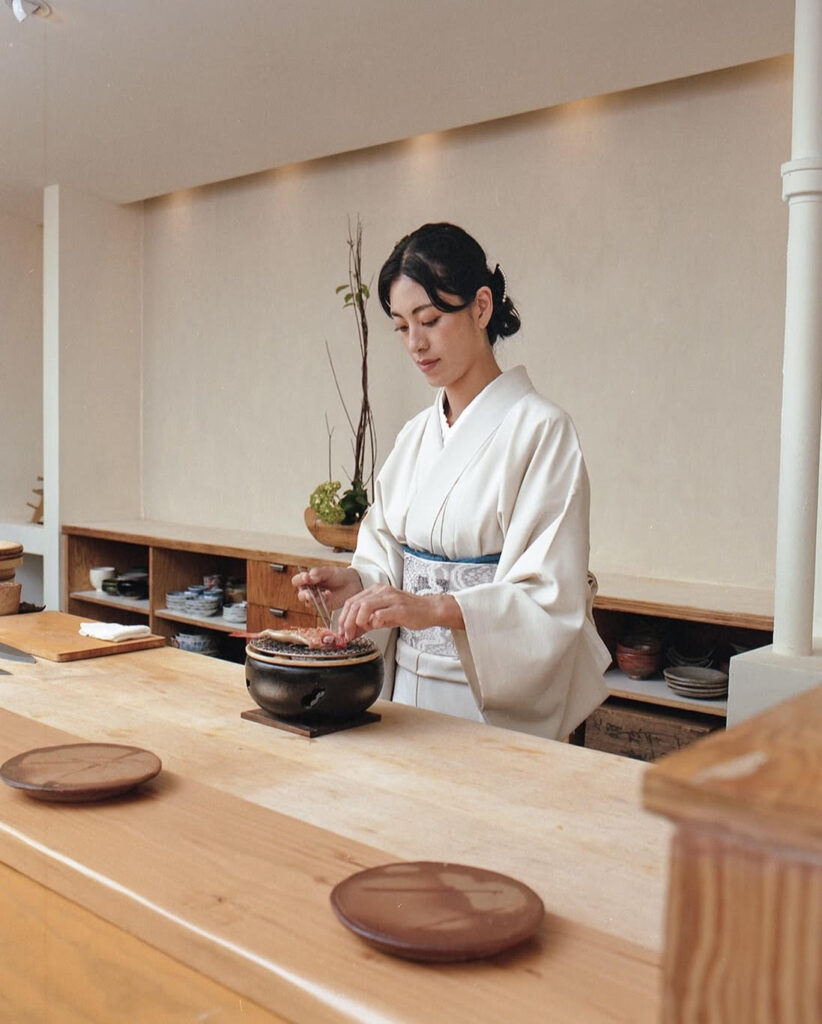
Mori Nozomi: Website and Instagram
Address: 11500 W Pico Blvd, Los Angeles, CA 90064
Make your reservation HERE
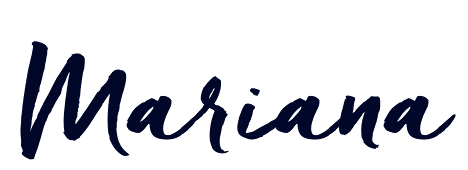


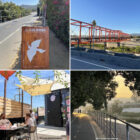

What do you think?